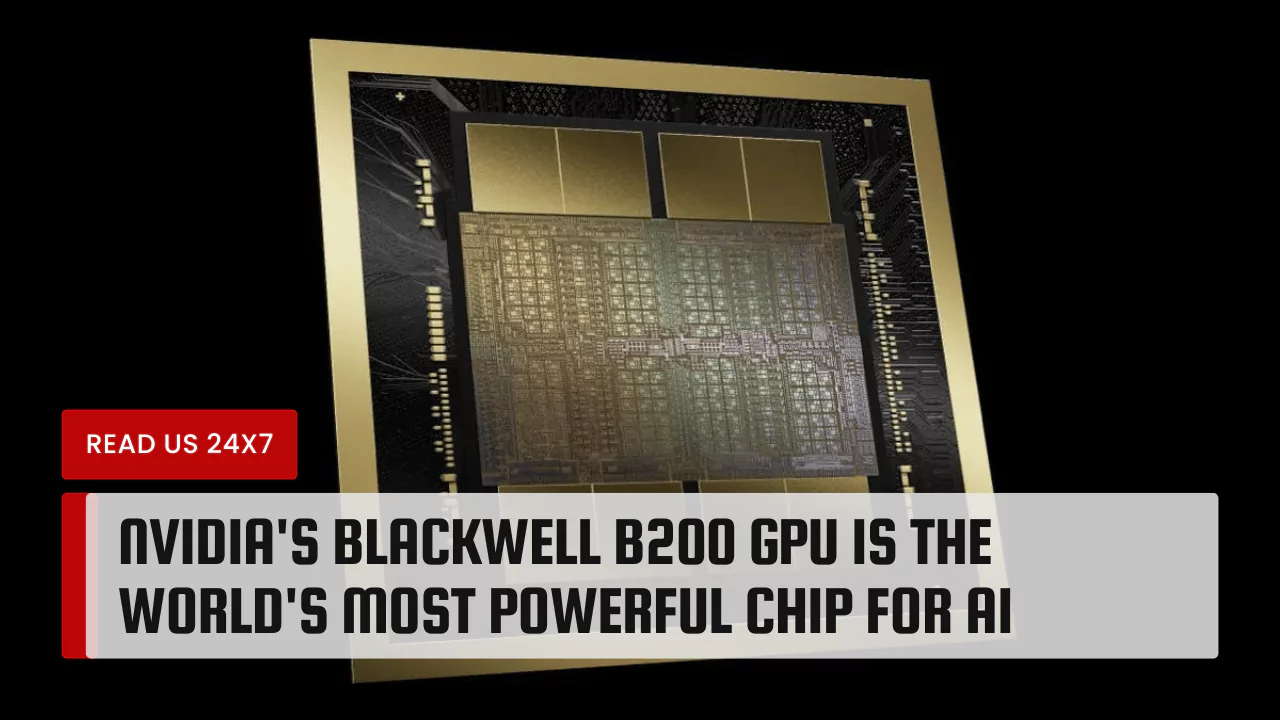Nvidia’s Blackwell B200 GPU has stormed into the scene, claiming the title of the world’s most powerful chip for AI. With its groundbreaking capabilities and unparalleled performance, this GPU is poised to reshape the landscape of artificial intelligence. Let’s delve into what makes the Blackwell B200 a game-changer in the realm of AI.
Introducing the Blackwell B200 GPU
Nvidia has unveiled the Blackwell B200 GPU, which they claim to be the most powerful chip for AI (Artificial Intelligence) applications. Here’s a breakdown of what this means:
- Processing Power: The Blackwell B200 GPU is designed to handle complex AI tasks at an incredibly fast rate. It offers up to 20 petaflops of FP4 horsepower, which essentially means it can perform 20 quadrillion floating-point operations per second.
- Transistors: The GPU is packed with a staggering 208 billion transistors. Transistors are tiny electronic switches that control the flow of electrical current within a chip. The more transistors a chip has, the more calculations it can perform simultaneously, leading to higher processing power.
- Manufacturing Process: The Blackwell architecture GPUs are manufactured using a custom-built 4NP TSMC process. TSMC (Taiwan Semiconductor Manufacturing Company) is one of the world’s leading semiconductor foundries, known for its advanced manufacturing technologies.
- Performance: Compared to previous generations, the Blackwell B200 GPU offers significant improvements in performance. It is reported to be four times faster than Nvidia’s previous AI GPU, known as Hopper.
- Applications: This powerful GPU is expected to accelerate breakthroughs in various AI applications, including machine learning, deep learning, natural language processing, computer vision, and more. Its high performance and processing capabilities make it suitable for handling large-scale AI workloads efficiently.
Overall, the Nvidia Blackwell B200 GPU represents a significant advancement in AI hardware, pushing the boundaries of what’s possible in terms of computational power and performance for AI-driven tasks.
Applications for the Blackwell B200
The Blackwell B200 opens doors to a myriad of applications across various industries. In the realm of generative AI, where the creation of complex and realistic content is paramount, this GPU shines. Its immense computational prowess enables the rapid generation of high-fidelity images, videos, and text, empowering creators to explore new frontiers of creativity.
Furthermore, the Blackwell B200’s capabilities extend beyond generative AI to encompass accelerated computing tasks. From scientific simulations to data analytics, this GPU accelerates the pace of computation, enabling researchers and businesses to tackle complex problems with unprecedented speed and efficiency.
Potential Benefits of the Blackwell B200
The H100 AI chip, predecessor to the Blackwell B200 GPU, was a significant milestone for Nvidia. However, the B200 represents a remarkable leap in performance and efficiency. Compared to the H100, the B200 offers four times the training performance, up to 30 times the inference performance, and up to 25 times better energy efficiency. This advancement showcases Nvidia’s commitment to pushing the boundaries of AI hardware.
The emergence of the Blackwell B200 brings forth a host of potential benefits for AI-driven endeavors. One notable advantage lies in its ability to significantly increase efficiency in AI tasks. By harnessing the GPU’s immense parallel processing capabilities, organizations can streamline their AI workflows, reducing both time and resource expenditures.
Moreover, the Blackwell B200 promises improved performance across various industries. Whether in healthcare, finance, or automotive, the GPU’s unmatched computational power enables the development of advanced AI solutions tailored to specific industry needs. From accelerating drug discovery to optimizing financial trading strategies, the Blackwell B200 opens doors to unprecedented innovation and efficiency.



